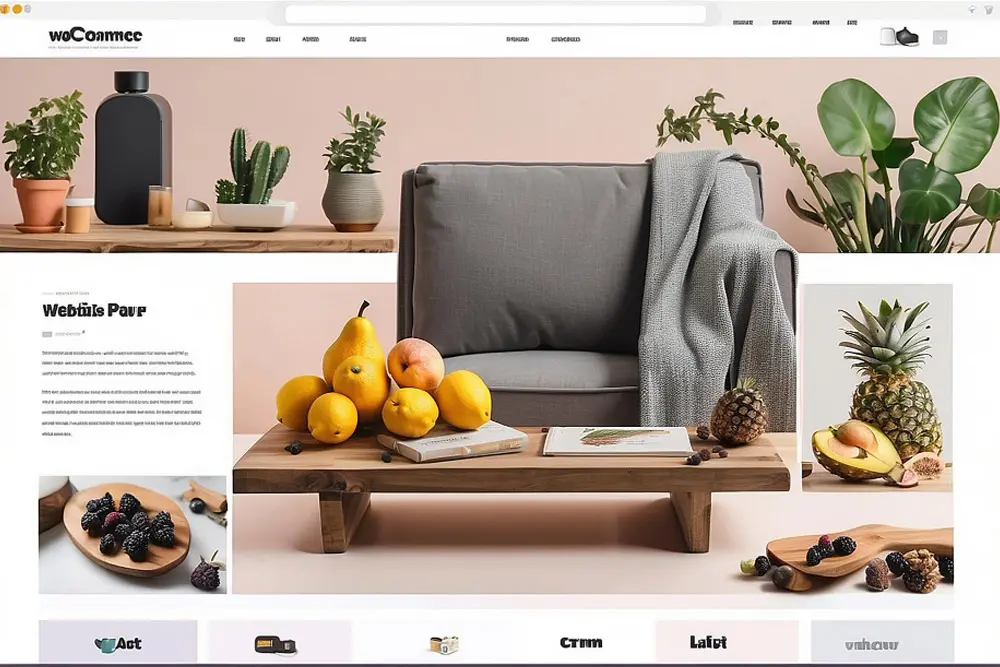Theme-based web design goes beyond being a trend; it’s a strategic way to build a united online presence that connects with your audience. It’s about creating an experience that looks good, works well, and is distinctly yours. Don’t get lost online! Stick out with a themed website in 2024.
The Basics of Theme-Based Web Design
Theme-based web design is like choosing the theme or vibe of your story, ensuring that everything, from colors to fonts, works together to create a consistent and engaging narrative. This approach not only makes your website visually appealing but also enhances the overall user experience, leaving a memorable impression on visitors.
As we are in 2024, understanding the impact of theme-based design has become a powerful tool for businesses aiming to stand out.
Benefits of Theme-Based Web Design
Choosing a theme-based approach for your web design comes with plenty of benefits. First off, it strengthens your brand identity, making it memorable for visitors. It also improves the site’s aesthetic appeal, which can significantly enhance user engagement.
Moreover, theme-based designs are typically more organized and easier to navigate, providing a smoother user experience. Lastly, a better choice for the long term as it is more cost-effective, and updates and redesigns may require less drastic changes.
Enhancing User Experience with Theme-Based Web Design
Consistency and Coherence
Think of theme-based web design as creating a familiar and comfortable environment for your website visitors. Just as a well-designed house has a consistent style throughout, a theme ensures that every page of your website follows a similar look and feel.
This makes it easy for visitors to navigate, like walking through rooms of a well-organized home. The result? A more enjoyable and less confusing experience for anyone exploring your site.
Navigation and Usability
Consider theme-based web design as creating a user-friendly map for your website visitors. Just like signs and pathways in a well-organized park guide you seamlessly, a theme ensures your website has clear layouts and familiar design elements.
This eases visitors to locate what they are looking for, making their site exploration effortless and enjoyable. After all, a user-friendly experience keeps them engaged and makes them stay on the site.
Visual Appeal and Engagement
Attractive sites capture attention and make visitors want to explore further. A theme-based design helps create an inviting and visually stimulating environment that encourages users to stay longer and engage more deeply with the content.
Through strategic use of colors, graphics, and typography that align with the chosen theme, websites can make a lasting impression on their audience.
The Role of Theme-Based Web Design in Branding
Creating a Strong Brand Identity
Choosing the right theme for your website can make all the changes when it comes to creating a powerful and memorable brand identity. The theme you select should reflect not only what you deliver but also the identity of a brand.
By integrating your brand’s colors, fonts, and style into your web design theme, you create a visual language that speaks volumes about your uniqueness.
Communicating Brand Values and Personality
A well-crafted theme allows your website to communicate your brand’s values and personality effectively. It goes beyond mere aesthetics.
Whether your brand is odd, professional, or innovative, your website’s theme can convey these traits sensitively yet significantly.
It’s your digital handshake, making the first impression and often setting the tone for the customer’s experience with your brand.
Establishing Brand Recognition
Think of your brand as a prominent face in a crowd. Just as you recognize friends by their unique features, a theme-based web design ensures your brand stands out online.
By using the same colors, fonts, and styles across your website and other digital spaces, you create a consistent look. This visual harmony becomes like a signature for your brand.
So, when customers see these distinctive elements, it’s like spotting a friend in the digital crowd. This recognition builds trust and loyalty, making them feel more connected to your brand.
The Impact of Theme-Based Web Design on Web Development Trends
Responsive and Mobile Friendly Design
With theme-based web design, your site becomes responsive and mobile-friendly. This means it adjusts smoothly to any device – whether it’s a computer, tablet, or smartphone. So, your audience gets a fantastic experience, no matter how they access your site.
Minimalism and Clean Design
Today’s users prefer websites that are not only aesthetically pleasing but also easy to navigate. Themes that emphasize minimalism help achieve this by removing unnecessary details and focusing on the content that matters most to your audience.
This trend towards simplicity ensures that your website is accessible, enjoyable, and effective in conveying your message.
Parallax Scrolling and Animation Effects
One of the more enchanting trends influenced by theme-based design is the integration of parallax scrolling and subtle animation effects. These elements add depth and engagement to the user experience, making websites more dynamic and interactive.
Choosing a theme that incorporates these features can significantly enhance the visual appeal of your site, making it stand out in a crowded digital landscape.
Best Practices for Implementing Theme-Based Web Design
Researching and Choosing the Right Theme
Selecting the perfect theme for your website begins with thorough research. Start by understanding your brand, the message you wish to bring, and the aspect of your target audience.
Look at competitors and websites that inspire you. Keep in mind that the brand’s identity and appeal to your audience’s preference should align with the theme you choose.
Consider factors like color schemes, layout options, and font styles that reflect with aesthetic of the brand.
Customizing and Personalizing the Theme
Once a theme has been chosen, make it your own. Most themes come with customization options allowing you to change the design to better fit your brand. This can include changing the color palette, modifying the layout, or adding your logo and custom images.
Personalizing your theme makes your website stand out and provides a rare experience for your visitors.
Testing and Optimizing the Theme
After customization, thoroughly test your website across different devices and browsers to ensure a seamless user experience.
Pay special attention to loading times, navigation ease, and responsiveness on mobile devices. Collect feedback from users and be prepared to make adjustments.
Regular optimization based on user assessment and performance analytics is crucial for maintaining an appealing and effective website.
The Future of Theme-Based Web Design
Emerging Trends and Innovations
As technology advances, we’re seeing more dynamic and interactive themes that incorporate innovative features like AI-driven design, voice navigation, and immersive 3D elements. This method not only boosts aesthetics but also improves user engagement and accessibility.
Importance of Adaptability and Flexibility
Flexibility in a theme allows for easy updates and integration with new tools and technologies. As user needs evolve and new web development trends emerge, the ability to adapt your website quickly and efficiently will be crucial for staying relevant and competitive.
In wrapping up, theme-based web design isn’t just about making websites look pretty. With the trends in web development evolving, adopting a thematic approach in your web design can set you apart, making your site not only visually appealing but also significantly more effective. Note, in the digital era, your website is your first impression, make it count.




